When it comes to creating effective educational spaces, one size most certainly does not fit all. Every student is unique, with different learning styles that shape how they absorb, process, and engage with information. Some thrive in quiet, solitary environments, while others excel in dynamic, collaborative settings. Recognising these diverse learning styles and designing spaces that accommodate them can make a world of difference in fostering a productive, supportive learning environment.
Here we’ll explore how different types of furniture and layouts can be used to cater to various learning styles, ensuring that every student has the opportunity to thrive in an environment tailored to their needs.
Understanding Diverse Learning Styles
Before diving into how furniture can support diverse learning styles, it’s important to understand what we mean by “learning styles.” Learning styles refer to the different ways in which people process and interact with information. Some of these include visual, auditory, and kinesthetic styles, as well as social (group-oriented) and solitary (individual) preferences. By recognising that each student learns differently, we can see that a single classroom setup may not be effective for all. Instead, we can design spaces that accommodate the full spectrum of learning preferences.
Solitary Study Nooks: Ideal for Introverts and Independent Learners
For students who prefer to study alone or need a quiet space to focus, providing a solitary study nook can make all the difference. Introverted learners, or those who thrive in solitude, often perform best when they can concentrate without the distraction of large groups or open spaces. Here, furniture plays a key role in creating these individualised spaces.
Furniture for Solitary Spaces:
Comfortable desks with privacy partitions: These partitions create a focus zone, allowing students to work without visual distractions. Adjustable desks or ergonomic chairs can help create a personal space conducive to long hours of study.
Our Acoustic Panels can enhance privacy by quickly and easily creating secluded areas on shared tables. Their flexible design allows students to adapt their workspace as needed, ensuring both quiet and focus without disrupting the larger environment. This makes them an ideal solution for adding privacy in open or shared learning spaces.
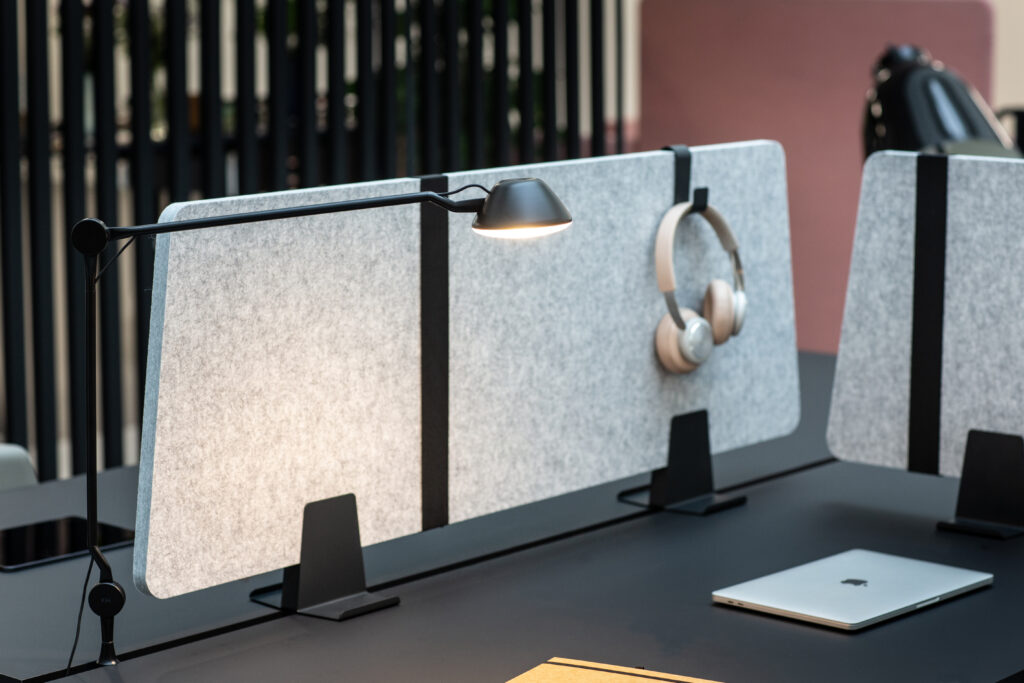
Reading chairs or soft lounge seating: For students who prefer to read or work in a more relaxed environment, comfortable seating with plenty of room for books and materials can promote concentration.
The FourUs® Solo is perfect for this. Designed for those seeking solitude, it offers both acoustic privacy and a cosy, stylish seating experience. With its optional castors for easy mobility, it provides flexibility while ensuring comfort and focus in any quiet corner of the classroom or study area.
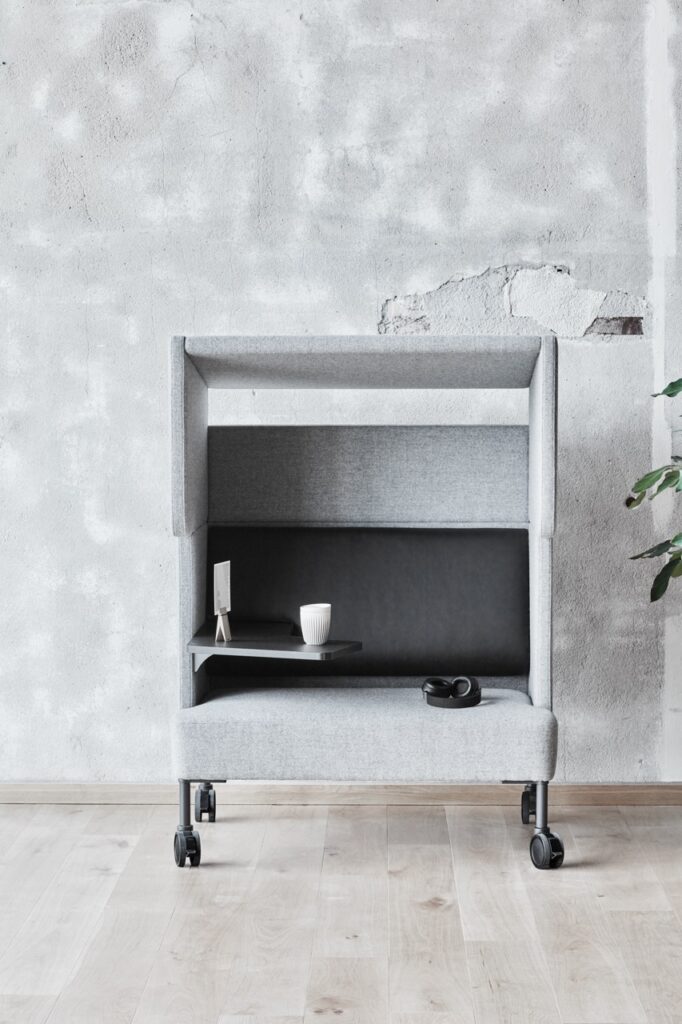
Personalised workstations: A mix of personal cubicles or semi-enclosed spaces ensures that introverted learners have the privacy they need while still being part of the larger learning environment.
The FourPeople Study Booth provides an ideal solution. Thoughtfully designed for optimal concentration, it provides a dedicated space for focused work in shared environments. Its acoustic features minimise distractions, while its sleek design and optional add-ons like hooks for bags and charging units cater to the practical needs of students. Perfect for classrooms, libraries or common areas, the FourPeople Study Booth transforms any space into a personal haven for uninterrupted learning.
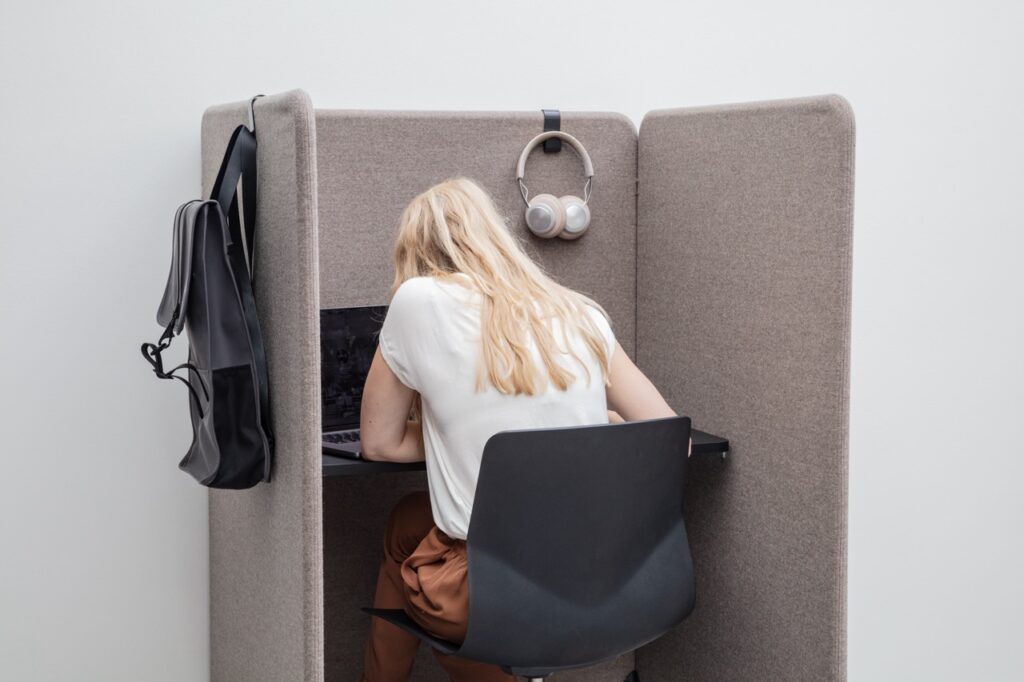
By creating quiet, focused spaces, we cater to the solitary learner who thrives on concentration and reflection.
Flexible Collaborative Spaces: Fostering Group Learning
On the other end of the spectrum are students who prefer to engage with others in a group setting. These learners benefit from collaborative spaces where they can discuss ideas, work together on projects, and learn through interaction. For these students, furniture needs to be flexible, movable, and conducive to group work.
Furniture for Collaborative Spaces:
Modular tables and seating: Lightweight, movable tables and chairs allow students to rearrange the space according to their group’s needs. Round tables or cluster seating encourages open discussion and shared problem-solving.
The FourFold® table is perfect for fostering collaboration. With its flip-top design and easy mobility, it allows groups to quickly adapt their workspace for different tasks or group sizes. Whether used for formal discussions or creative brainstorming sessions, its versatile design supports dynamic group work, promoting interaction and teamwork. The ability to fold and store the tables efficiently ensures that space can be optimised for various learning activities, making it an essential piece for flexible, collaborative environments.
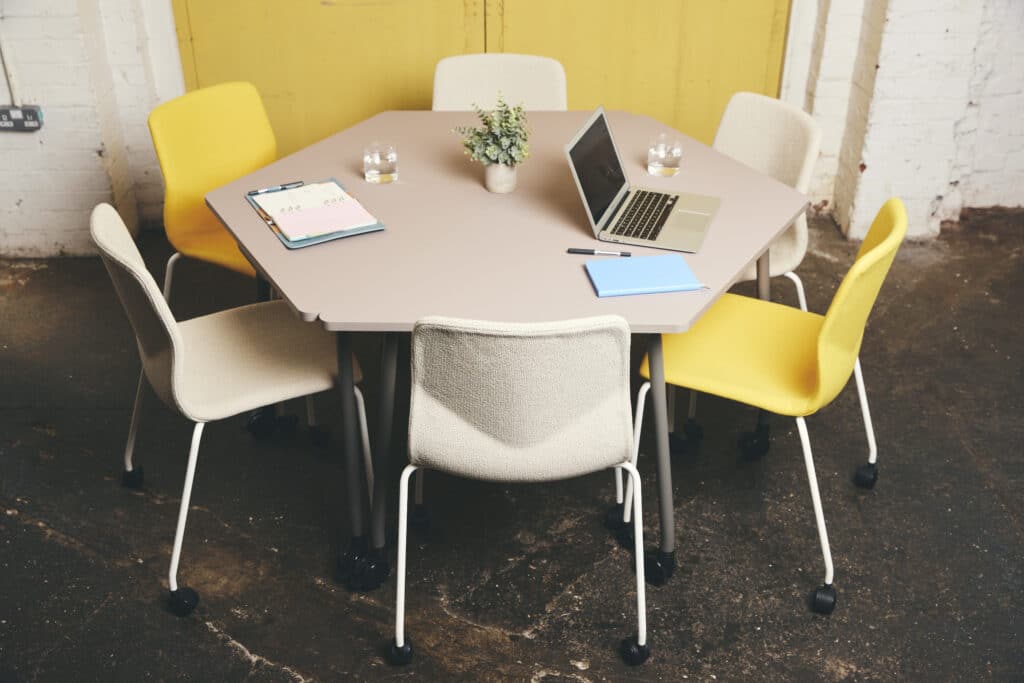
Standing desks or tall counters: For more dynamic group work, standing desks or counter-height tables can encourage a more fluid interaction between students. These furniture pieces promote engagement and active participation.
Soft seating areas and lounges: For informal group discussions or brainstorming sessions, flexible lounge seating and soft chairs can make students feel more at ease while fostering creativity and communication.
Crafted for comfort and flexibility, the FourLikes® modular sofa creates a dynamic hub for collaboration. Whether in a modern classroom, student lounge or common area, it provides a comfortable setting for impromptu group discussions, team projects, or simply a place to unwind. Its modular design allows for easy reconfiguration to meet the needs of students, transforming underused spaces into functional, engaging areas that encourage interaction and creativity.
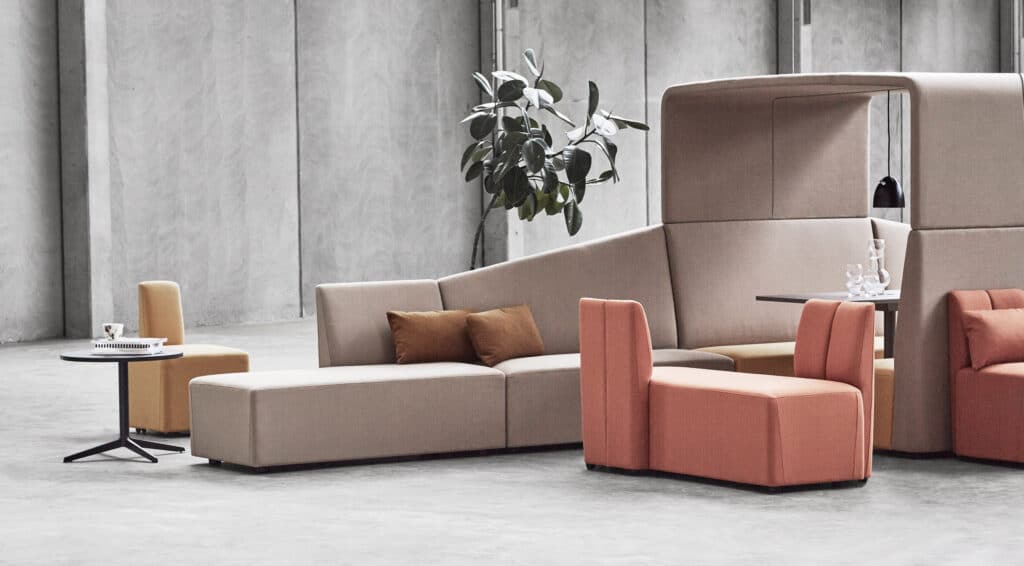
These types of furniture support a collaborative approach to learning, offering students a chance to engage with peers, exchange ideas, and gain new perspectives on their studies.
Accommodating a Full Range of Learning Styles
In addition to introverts and extroverts, there are many other learning styles that can be supported by well-designed educational spaces. Some students, for instance, may learn best through seeing, while others thrive on movement or auditory interaction.
Visual learners absorb information through images, videos, and diagrams. To support them, educational spaces can include:
- Whiteboards, digital screens, and visual aids for displaying key concepts.
- Color-coded furniture and learning materials to help organise information and enhance memory retention.
- Well-lit areas to ensure that visual materials are easily readable.
Auditory learners prefer listening and often excel in environments where they can hear information through lectures, discussions, or recordings. To support auditory learners, spaces could include:
- Acoustic furniture or sound-absorbing panels to minimise distracting background noise.
- Group discussion areas or seminar-style seating to promote verbal exchanges.
- Audio-enabled technology like microphones and speakers to facilitate learning.
Kinesthetic learners benefit from physical activity and hands-on experiences. They often struggle to sit still for long periods, making flexible seating and movement options important.
- Standing desks or adjustable-height furniture that allow students to change their posture.
- Interactive workstations where students can engage with physical materials and models.
- Open spaces for movement such as walking areas or areas for group activities that encourage active participation.
The Hybrid Space: Blending Solitude with Collaboration
In many modern educational settings, a hybrid approach is needed to accommodate the full range of learning styles. Some students may enjoy moments of solitude but still need to engage in group work from time to time. To cater to these students, educational spaces should offer a mix of private study areas and flexible, open collaborative zones.
Furniture for Hybrid Spaces:
Mobile partitions and movable walls: These can create adaptable learning environments where students can choose between a quiet, private space or an open area for group work. This level of flexibility ensures that both introverts and extroverts can function effectively.
Our Puzzle acoustic panels offer a perfect solution for quickly dividing spaces. With their ability to reduce sound and create both visual and acoustic privacy, they help mitigate distractions and offer a calm, focused atmosphere for students who need privacy. Their sleek design and array of colours also add to the aesthetic appeal of the space, making them a stylish yet practical addition to any hybrid learning environment.
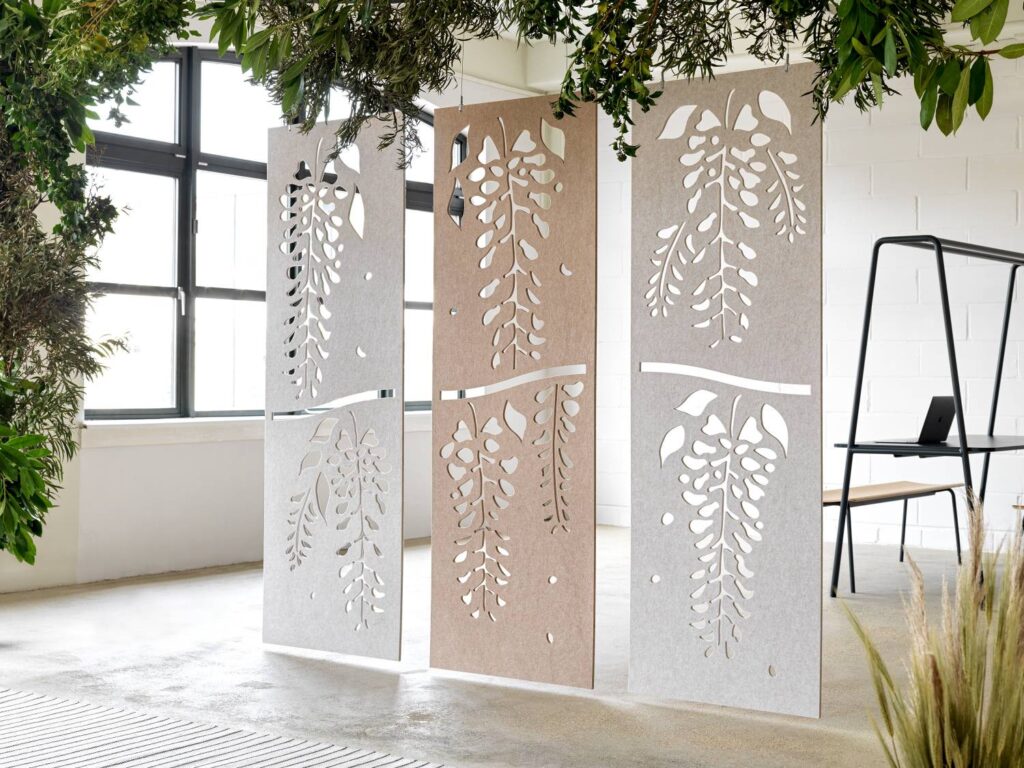
Adjustable furniture configurations: Chairs and tables that can easily be rearranged for both individual and group work give students the option to tailor their workspace to the task at hand. This is especially helpful in classrooms where both solitary study and collaborative tasks are required.
Multiple seating options: A combination of individual desks, large group tables, and lounge-style seating can provide the variety needed to support different learning styles, from quiet reflection to team-based projects.
By combining these elements, educators can create a balanced learning environment where students can move seamlessly between different modes of learning, depending on the task or project.
Designing for Diversity in Learning Styles
Designing educational spaces that accommodate diverse learning styles is more than just about making a room look aesthetically pleasing. It’s about creating an environment where every student feels empowered to learn in the way that suits them best. Whether they prefer solitude or thrive in groups, the right furniture can support a range of learning preferences, making the space more inclusive, functional, and effective.
By recognising and catering to the different learning styles within the classroom, we ensure that each student has the opportunity to succeed. Tailoring educational spaces to these needs helps create an environment where all learners—whether independent, social, visual, auditory, or kinesthetic—feel comfortable, supported, and equipped to excel.
In the end, it’s about providing a space that helps every student flourish, no matter their preferred style of learning.


